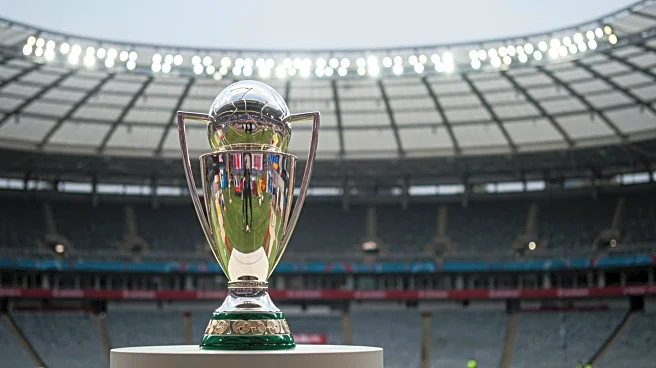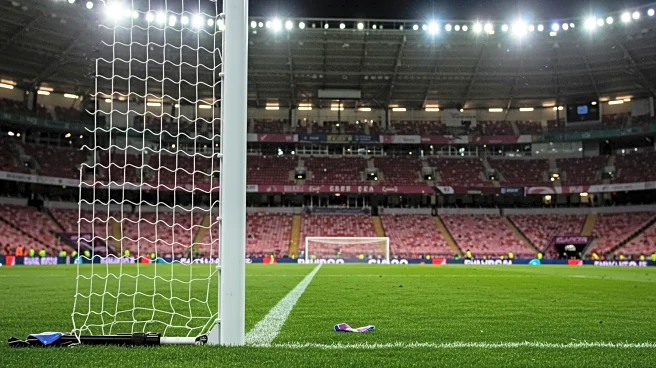What's Happening?
Liverpool is actively pursuing the signing of Alexander Isak, a move that has initiated a complex transfer chain involving multiple clubs. Newcastle United, Isak's current team, is reluctant to let go of their star player despite Liverpool's willingness to offer a record-breaking fee. The situation is further complicated by Newcastle's need to find a replacement striker, as Callum Wilson has also departed the club. The transfer chain involves Bournemouth closing in on a deal for Amine Adli from Bayer Leverkusen, which would allow Brentford to sign Dango Outtara from Bournemouth. This sequence of transfers would enable Newcastle to acquire Yoane Wissa, making the loss of Isak more manageable.
Why It's Important?
The potential transfer of Alexander Isak to Liverpool is significant for several reasons. For Liverpool, acquiring Isak would bolster their attacking options, potentially enhancing their competitiveness in domestic and international competitions. For Newcastle, losing Isak could impact their performance, but securing a replacement like Yoane Wissa could mitigate this loss. The transfer chain highlights the interconnected nature of football transfers, where a single move can trigger a series of transactions across multiple clubs. This situation underscores the strategic planning required by clubs to manage their rosters effectively.
What's Next?
The next steps in this transfer saga depend on the successful completion of the deals involving Amine Adli, Dango Outtara, and Yoane Wissa. If these transfers proceed as planned, Newcastle may be more inclined to finalize the sale of Isak to Liverpool. The outcome of these negotiations will likely influence the strategies of the involved clubs as they prepare for the upcoming season. Stakeholders, including fans and club management, will be closely monitoring these developments.
Beyond the Headlines
This transfer chain exemplifies the complexities of modern football economics, where player valuations and strategic acquisitions play a crucial role in shaping team dynamics. The situation also highlights the pressure clubs face in retaining key players amidst lucrative offers from rival teams. Additionally, it reflects the broader trend of increased financial investments in football, driving competitive balance and market dynamics.











